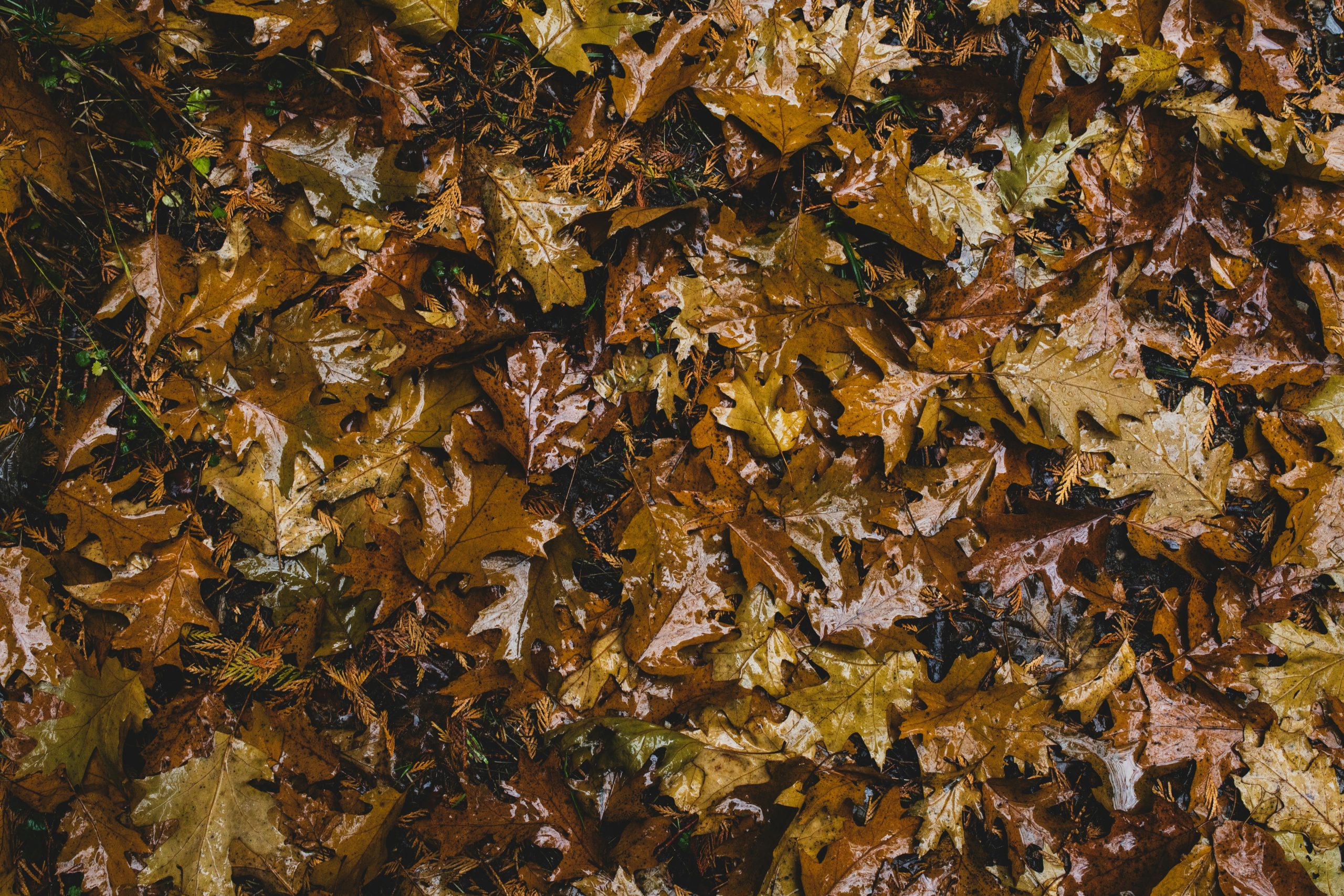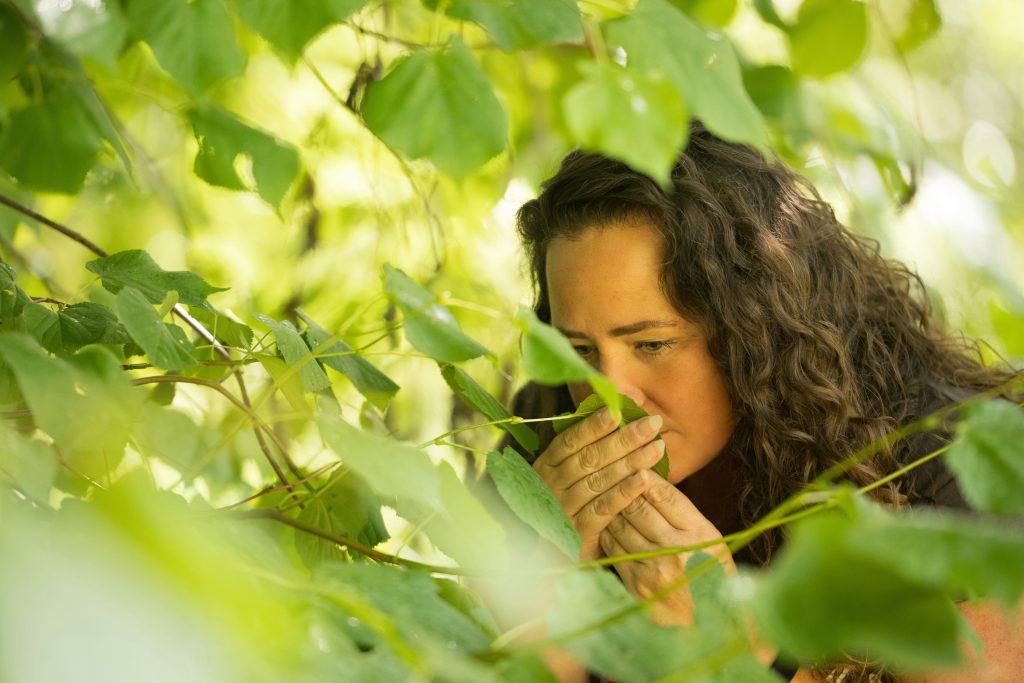Continuing our series on exploring our main senses for deeper connection, this week we delve into one of our most ancient and powerful tools: the sense of smell.
Our nose is not just for breathing; it is a direct and powerful tool for connecting with the natural world and shaping our inner landscape. It directly affects how we process emotions and memories, making natural scents more impactful than we often realise. This is the true power of connecting to nature through smell.

🔬 The Science Behind Smelling Nature
Unlike the senses in the previous two blogs in this series – sight and hearing, the olfactory bulb – the part of the brain that processes smell – has a direct line to the limbic system. This is the brain’s core hub for managing emotions, memory and behaviour. That’s why natural scents can instantly calm us and boost our mood. Equally, the smell of pine trees, fresh rain or rich soil can transport us back to a specific moment from our past.
This powerful link explains why the scent of petrichor after the rain can flood the mind with a sense of peace. That deep, earthy aroma, particularly the smell around trees and plants when it’s raining, is thanks to geosmin – a compound produced by soil bacteria – and our brains are uniquely wired to find it comforting.
The Studies on Connecting To Nature Through Smell
A 2023 study in Science Advances emphasised how natural odours shape emotional responses and overall wellbeing. It suggests that smell should be taken more seriously in how we design and think about our environments. Thus reinforcing the significant effect nature’s invisible cues have on our psychological state. Read the study here.
Excitedly, there’s also a growing interest in aromachology, the study of how smells affect behaviour and feelings. Natural scents are being studied for their proven role in reducing stress and improving mental health. Perhaps nothing new, but at least it’s being officially explored now Learn more about aromachology.

Even the familiar scents of autumn – like fallen leaves or wood smoke – can spark a sense of comfort and nostalgia. Think of the complex, intoxicating smell of the mossy, mushroomy, earthy forest floor covered in fresh, wet autumnal leaves 🍁. These smells from decomposing plant matter can trigger powerful memories of childhood, such as playing in the woods or visiting a grandparent’s garden.
Theresa M. Crimmins, PhD, director of the USA National Phenology Network advises that as fallen leaves decompose, “sugars and carbohydrates break down, emitting volatile organic compounds and other gasses that have a musky, somewhat sweet smell,”. This scent varies regionally, depending on which particular plants are dropping leaves.
Like much of the Nature Connection revolution, it isn’t a new discovery. Nearly 200 years ago, English novelist and poet George Eliot deemed the smell of autumn, “a perfect anodyne to the restless spirit” in an 1841 letter: “Delicious autumn! My very soul is wedded to it, and if I were a bird I would fly about the earth seeking the successive autumns.”
🌲 Four Simple Ways to Tune Into Nature’s Scents
Using your sense of smell is a simple, often overlooked way to deepen your experience of nature. It doesn’t take any special equipment – just a little awareness.
1. Take a “Scent Break” on Your Nature Walk
- How: Pause for a few moments, close your eyes, and take several deep, slow breaths. Don’t just inhale; actively notice the different scents around you. Contrast the sharp, refreshing scent of pine sap from a nearby tree with the more mellow, sweet aroma of grass.
- Why it Works: This intentional focus interrupts the often persistent mental chatter. By engaging your olfactory sense, you deliberately ground yourself firmly in the present moment. Taking your focus away from internal worries. It is the quickest way to practice connecting to nature through smell for instant calm.
2. Start a Smell Log
- How: Carry a small notebook or use a voice memo app to jot down the smells you notice during your walks or time in the garden. Don’t just name the source and move on; describe the feeling it evokes. How do you feel as you inhale the sharp, onion-like scent of wild garlic? Maybe energised, excited or even nostalgic for a childhood walk? Are you feeling anything in your body?
- Why it Works: Smells are potent memory triggers. By linking a scent to a specific emotion or memory in your log, you map out your personal “scent sanctuary,” giving you a reference point for when you need to quickly recall a feeling of calm.
3. Explore Different Natural Settings for a Scent Comparison
- How: Beaches, dense forests, wide meadows and city parks all offer uniquely scented experiences. Try visiting a new environment and compare the subtle differences. On a dry day, the forest might smell of dry wood and sun-warmed needles. After rainfall, it transforms into that deep, life-affirming petrichor and geosmin experience.
- Why it Works: This activity enhances sensory differentiation. By comparing environments, you sharpen your awareness, forcing your brain to process nuances and strengthening your overall nature connection.
4. Spend Time with Aromatic Plants and Herbs
- How: Gardening, even on a small scale in a container, can fully immerse you in natural scents. Gently crush a rosemary leaf, sniff the damp soil, or snap a handful of pine needles. If you can’t garden, simply buying a small bunch of fresh mint or thyme and holding it works wonders.
- Why it Works: Plants and trees especially conifers like pines and firs release volatile organic compounds (VOCs) known as phytoncides. These essential oils have a measurable effect on our physiology, helping to lower cortisol and blood pressure while increasing white blood cell count and productivity (our immunity). This direct, hands-on experience maximises those benefits and deepens your practice of connecting to nature through smell.
A Deeper Connection in Every Moment
I hope I’ve showed you that your sense of smell is a gentle, powerful invitation back to your personal story. The subtle scent of damp earth can take you instantly back to a moment of safety and joy from your childhood, providing comfort when you need it most.
Building on our last blog post, “Nature Sounds for Stress Relief: Tune In to Nature”, this deep dive into smell is just one more way to experience the world around you. This entire series is designed to help you find simple, meaningful ways to receive the messages from Mother Nature using your senses, no matter where you are. Read the first post here: https://adoreyouroutdoors.co.uk/the-power-of-sight-in-nature-connection/
If you’re ready to take the next step and apply these principles, be sure to grab my free guide to Going Forest Bathing Alone, which includes five sensory activities you can do alone to help you find peace and clarity on your own terms.
Using your nose is truly a simple, often overlooked way to deepen your experience of nature. It doesn’t take any special equipment – just a little awareness.
I’d love to know: What is the one natural smell that takes you back to a specific memory?



